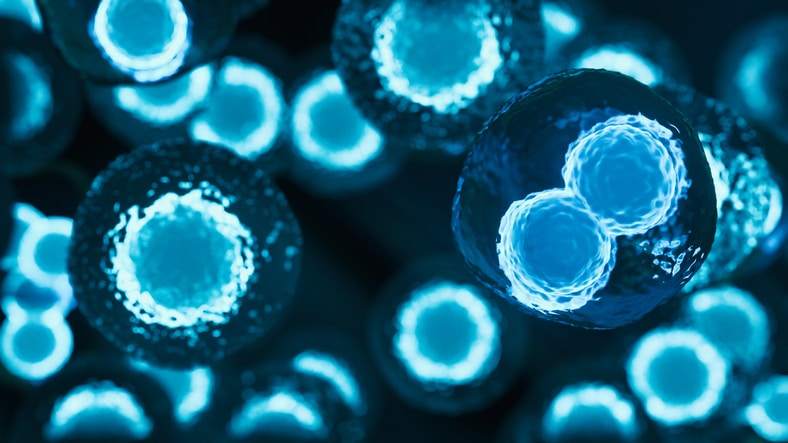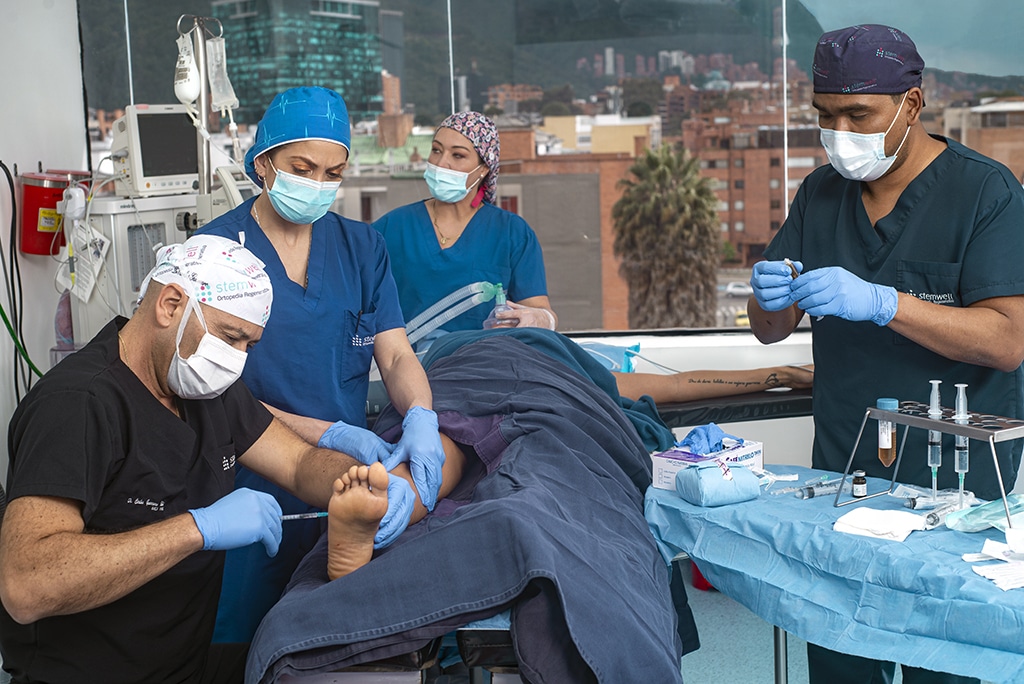Stem cells and platelet-rich plasma (PRP) are two therapies used in regenerative medicine. While many of the principles underlying both treatments are similar, they should be seen as distinct from one another.
At Stemwell, we utilize both stem cell and PRP therapies to treat a wide variety of conditions and injuries.
The goal is the same, to regenerate tissue and support healing.
However, it is useful to understand the differences between PRP and stem cell therapies and how they are applied to support the treatment of patients who visit our clinic looking to improve their quality of life.

What is Stem Cell Therapy and How is it Administered?
Stem cells are unspecialized cells that can transform into a particular type of cell that your body requires to address a health issue that is causing you pain or debilitation.
At Stemwell, we believe the ideal source of stem cells is donated umbilical cord tissue from healthy mothers. Although they can be taken from your own body, we use cells from a donor; this enables us to select stem cells with the most promising properties when it comes to promoting regeneration.
Once stem cells have been harvested from a healthy donor, they can be injected into the appropriate location.
The stem cells, along with your body’s recruited cells, support healing and decrease inflammation.
What is Plasma-Rich Platelet (PRP) Therapy?

The most significant way in which PRP therapy differs from stem cell treatment is that it does not use donor cells. Instead, PRP therapy uses your body’s own platelets to stimulate damaged tissue repair.
Platelets are a component of your blood. Their main function is to combat bleeding from an injury by clumping together. They contain growth factors, which are specialized proteins that accelerate your healing response.
In PRP, blood is drawn from a vein. That blood is then placed in a centrifuge, which extracts the platelets we need. They can be injected into an injured or affected area to speed up recovery.
The types of areas that benefit most from PRP treatments include muscle and joint injuries, and conditions such as arthritis and tendinitis.
We hope that explains the key differences in the PRP vs stem cell therapy debate. You can be assured that, at the Stemwell Clinic, we will select and apply the treatment that is appropriate to your condition and that will help promote the affected tissue’s recovery.
Find out more by speaking with Stemwell today

Whether you require stem cell therapy, PRP treatment, or both PRP and stem cells, Stemwell’s experienced and knowledgeable physicians are here to support you and help to improve your quality of life.
If you would like to know more you can contact us with any questions, or apply today to check your eligibility. We look forward to hearing from you soon.



